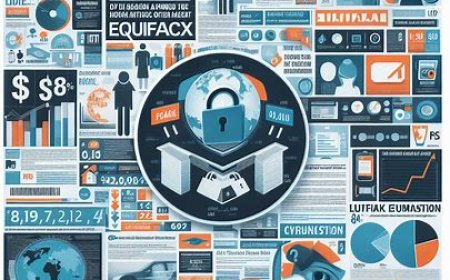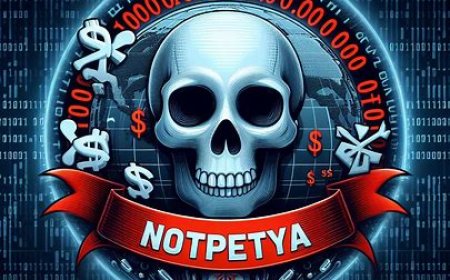DarkSeoul: Mysterious Cyber Act Shaking the World
While the exact motives of this attack remain speculative, the DarkSeoul incident highlights how cyber attacks can be used as tools to achieve political or military objectives, raising concerns about the ability of states to conduct damaging cyber operations.

The DarkSeoul attack in 2013 was one of the prominent incidents of cyber warfare with serious consequences, linked by cybersecurity researchers to entities associated with the North Korean government. The attack primarily targeted financial institutions and media outlets in South Korea. The modus operandi of DarkSeoul involved massive distributed denial-of-service (DDoS) attacks to disrupt and disable target websites. The attack also included data destruction, with malware designed to delete and obliterate data on target systems. Additionally, DarkSeoul employed infiltration techniques and hacking to steal sensitive information. The attack shocked the world by causing widespread damage to computer systems, resulting in significant financial and operational losses.
The timeline of the DarkSeoul attack (2013) includes a series of events indicating coordination and sophisticated tactics in the cyber assault:
1. Malware Imposition and Data Destruction (March 20, 2013): The attack commenced on March 20, 2013, with the deployment of malware designed to damage data on several target computers. The malware deleted key files and destroyed data, causing significant losses.
2. DDoS Attacks on Financial Institutions and Media (March 20 - March 25, 2013): Massive distributed denial-of-service (DDoS) attacks were launched against financial institutions and media outlets in South Korea. The attacks aimed to disrupt services and disable target websites, creating chaos and attracting media attention.
3. Spread of "DarkSeoul" Malware (March 25, 2013): The group disseminated malware later known as "DarkSeoul." This malware had the capability to destroy data on target systems and was considered a primary tool in the attack.
4. Return Attack with "KorHigh" Malware (June 3, 2013): Several months after the initial attack, the group continued its assault by deploying additional malware called "KorHigh." This malware was also designed to damage data and steal sensitive information.
5. Infiltration and Data Theft (Subsequent Months): In addition to data destruction, the group engaged in infiltration and hacking activities to steal sensitive information. Methods included techniques such as phishing and exploiting system vulnerabilities.
6. Alleged Involvement of North Korea (Speculation Continues): Although the exact motives and perpetrators of this attack remain uncertain, many cybersecurity analysts and authorities suspect the involvement of North Korea. Technical indicators and attack patterns resembled earlier attacks associated with North Korea.
The DarkSeoul attack raised global concerns about the potential cyber threats emanating from state entities and highlighted the vulnerabilities of the financial and media sectors to cyber warfare.
Although several security measures were taken after this attack, the incident marked the serious impact that coordinated cyber attacks can have.
The DarkSeoul attack had significant repercussions, especially on the financial and media sectors in South Korea. Here are some key impacts of this attack:
1. Service Disruption and Economic Impact: The DDoS attack targeting financial institutions and media led to widespread service disruptions. Financial institution websites became inaccessible, and media services were temporarily halted. This could have a negative impact on economic and financial activities in South Korea.
2. Financial Instability: The financial sector was a primary target of the attack, and the shutdown of financial institution websites could create concerns and uncertainties in the financial market. The attackers could exert economic pressure by disrupting the operations of financial institutions and eroding public trust.
3. National Security Concerns: The attack raised concerns about the national security of South Korea. At the time of the attack, geopolitical tensions on the Korean Peninsula were already high, and such a cyber attack could exacerbate the security situation.
4. Reputation Damage: This cyber attack tarnished South Korea's reputation on the world stage. The hackers' ability to launch an attack that damaged critical infrastructure and caused economic disruptions highlighted the vulnerability of the country to cyber attacks.
5. Cybersecurity Uncertainty: The DarkSeoul attack created uncertainty regarding South Korea's cybersecurity. The country was subsequently faced with the demand to strengthen cyber defenses, identify and respond to threats more quickly, and mitigate the impact of future cyber attacks.
6. Global Awareness of State Threats in Cyber Attacks: The attack drew global attention to the serious threats that can arise from states involved in cyber attacks. This created urgency for the international community to enhance cooperation and establish international cybersecurity norms.
The impact of this attack brought about changes in how South Korea and other nations perceive and address the cybersecurity threats that may originate from state entities. Attacks like these serve as valuable lessons in understanding the complexity and serious consequences of coordinated and focused cyber attacks.
While the exact motives of this attack remain speculative, the DarkSeoul incident highlights how cyber attacks can be used as tools to achieve political or military objectives, raising concerns about the ability of states to conduct damaging cyber operations.
(source: chatgpt)
What's Your Reaction?























































